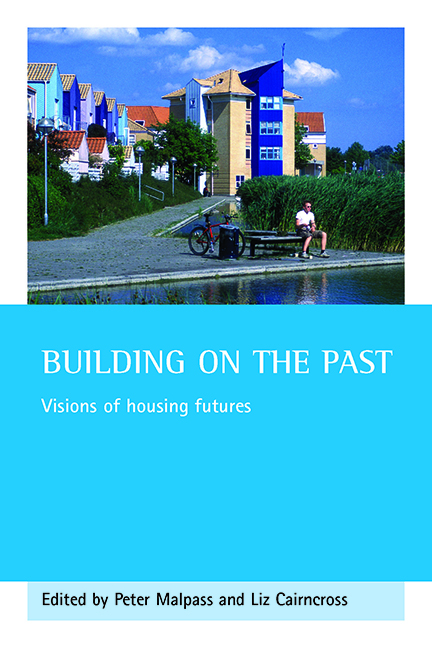Book contents
- Frontmatter
- Dedication
- Contents
- List of tables, figures and photographs
- Foreword
- Acknowledgements
- List of contributors
- one Introduction
- two Moving with the times: changing frameworks for housing research and policy
- three A new vision for UK housing?
- four Housing demand, supply and the geography of inequality
- five Understanding the drivers of housing market change in Britain’s postindustrial cities
- six Affordability comes of age
- seven Mob mentality: the threat to community sustainability from the search for safety
- eight Housing and the ageing population
- nine Tenant futures: the future of tenants in social housing
- ten Democracy and development
- eleven Conclusion
- Index
- Also available from The Policy Press
one - Introduction
Published online by Cambridge University Press: 15 January 2022
- Frontmatter
- Dedication
- Contents
- List of tables, figures and photographs
- Foreword
- Acknowledgements
- List of contributors
- one Introduction
- two Moving with the times: changing frameworks for housing research and policy
- three A new vision for UK housing?
- four Housing demand, supply and the geography of inequality
- five Understanding the drivers of housing market change in Britain’s postindustrial cities
- six Affordability comes of age
- seven Mob mentality: the threat to community sustainability from the search for safety
- eight Housing and the ageing population
- nine Tenant futures: the future of tenants in social housing
- ten Democracy and development
- eleven Conclusion
- Index
- Also available from The Policy Press
Summary
Building on the past is a title highlighting the way in which modern towns and cities are to a large extent literally built on top of the foundations of earlier structures. As urban populations grow, so governments and planning systems around the world are increasingly emphasising the need to contain physical expansion and to increase residential densities. In Britain, for example, the Report of the Urban Task Force (1999, p 11), called for the development of brownfield land and the recycling of existing buildings to be made more attractive than building on greenfield sites. This was rapidly translated into a government commitment to a target of 60% of new housing on brownfield sites. Our title also refers to the fact that in the case of housing the stock of dwellings inherited from the past represents a valuable resource on which to build a better future; they also constitute an important part of the problem, of course, and the replacement of old and worn-out houses is a major challenge. Governments in Europe and North America have been responding to problems of housing supply and quality for a century or more, and, in principle, it should be possible to use the experience thus accumulated to design smarter policies for the future.
This book is partly about asking what can be learned from the past that may be of value in the future, and it is partly about speculating about how the future might turn out. But the use of the plural in the subtitle is deliberate: the book sets out a series of visions of housing futures, not a programme or manifesto. The various chapters were specially commissioned from housing experts working in both academic and policy settings, and were originally presented as papers at a conference arranged by the Housing Studies Association in April 2005. The majority of chapters draw on and are informed by British research but provide a basis for thinking about housing futures on a wider scale. The intention is to look beyond the immediacy of current concerns and to identify the sorts of issues that will be setting the agenda for housing over the coming 20 or 25 years.
- Type
- Chapter
- Information
- Building on the PastVisions of Housing Futures, pp. 1 - 14Publisher: Bristol University PressPrint publication year: 2006



